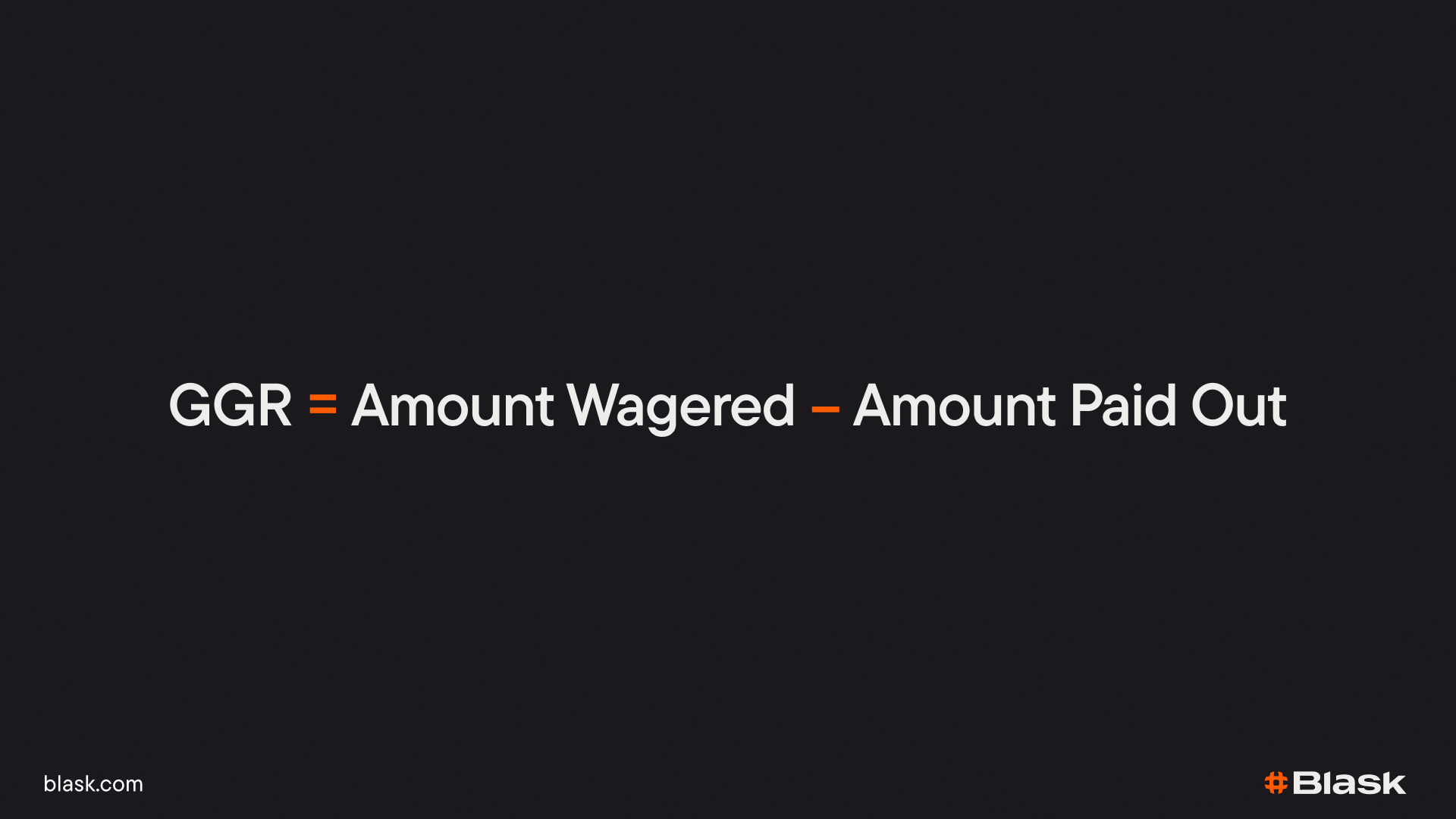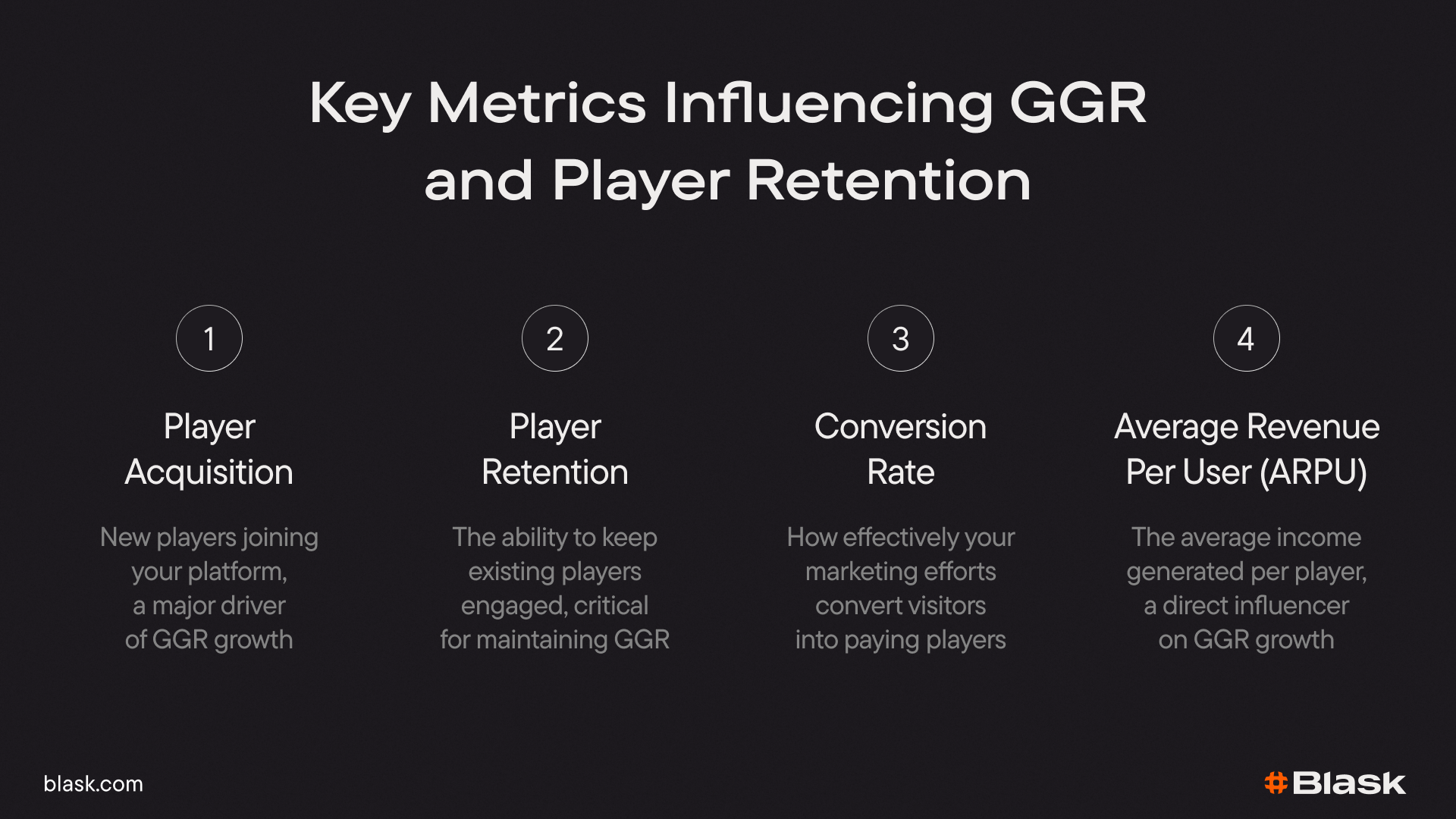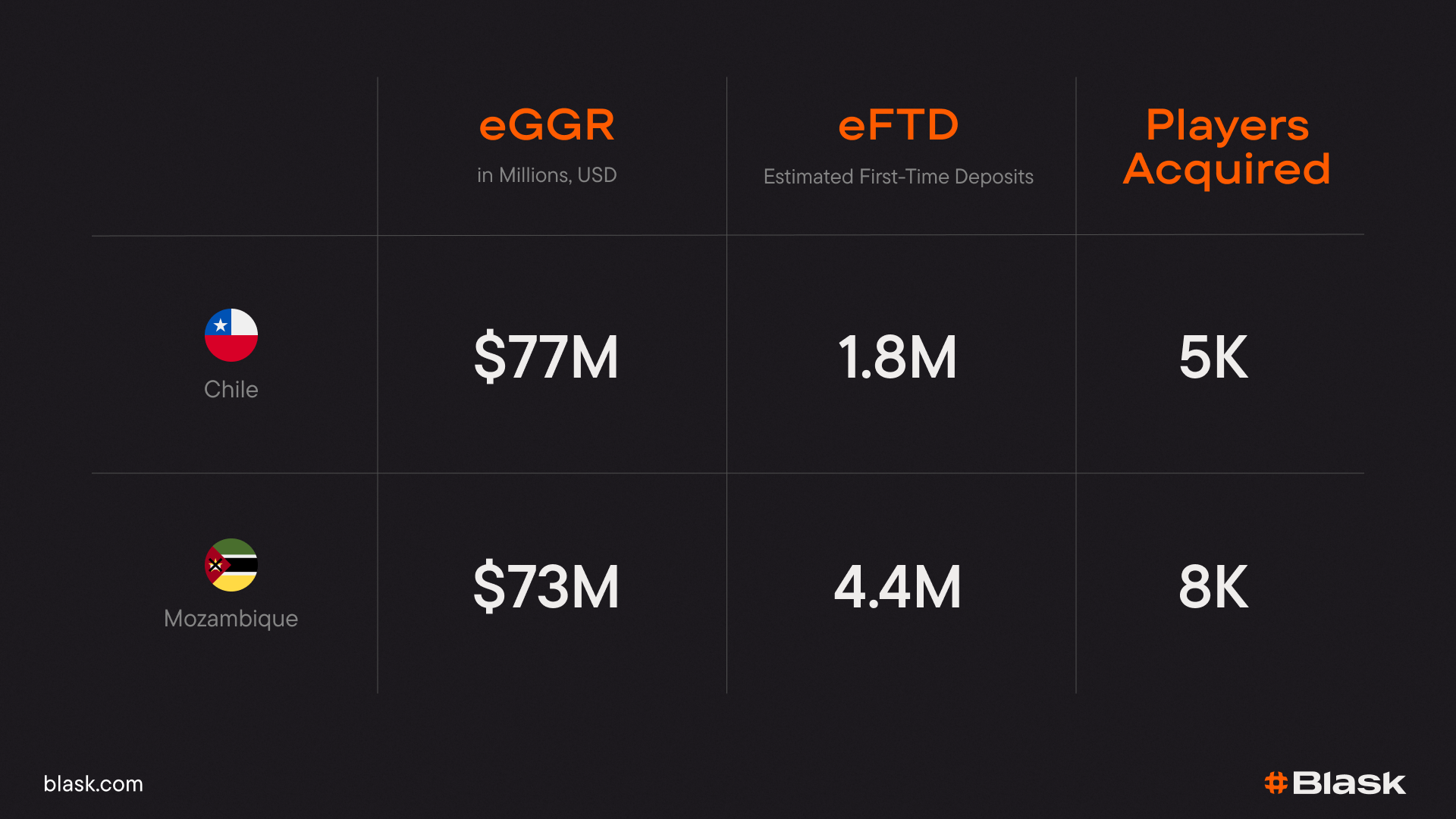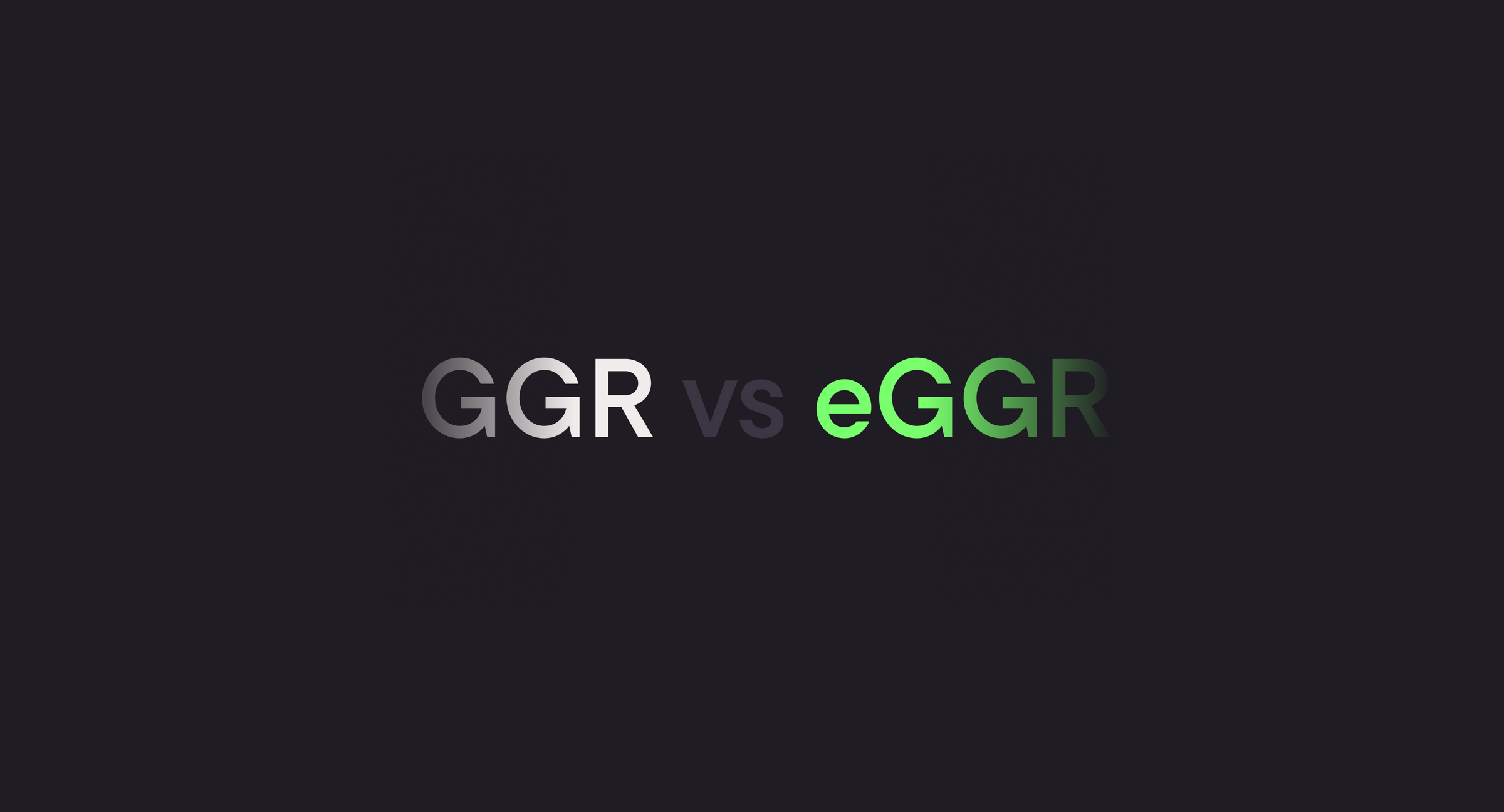Have you ever thought about what drives a $92.9 billion industry? Beneath the bright lights and the sounds of slot machines, there's a three-letter acronym that keeps casino executives on their toes: GGR. In 2023, it has reshaped the gambling scene into an empire that rivals the GDP of some smaller nations.
Welcome to the realm of Gross Gaming Revenue, where every spin, wager, and poker hand plays a part in a metric that's changing the future of gaming. Grasping GGR goes beyond just numbers – it's about uncovering the insights of an industry that's redefining entertainment.
How is GGR calculated?
Gross Gaming Revenue (GGR) represents the total amount of money retained by gambling operators after paying out winnings but before deducting operating expenses. The basic formula for calculating GGR is:

In the iGaming industry, GGR calculation includes several key components:
Wagers and bets
- Sports betting stakes
- Casino game bets
- Poker rake
- Other gaming activities
Payouts
- Player winnings
- Promotional credits
- Bonus payouts
- Jackpot contributions
For accurate GGR tracking, operators must consider various factors that impact revenue calculations:
- Bonus abuse prevention
- Currency exchange rates
- Payment processing fees
- Regulatory compliance costs
Modern iGaming platforms use sophisticated AI-powered analytics to calculate GGR in real-time, providing operators with instant insights into their revenue performance. These systems can break down GGR by game type, player segment, and geographical region to offer granular performance metrics.

Why GGR is vital for iGaming operators
GGR serves as the cornerstone metric for measuring success and profitability in the iGaming industry. Its significance extends across multiple operational aspects:
Performance measurement
GGR provides critical insights into:
- Overall financial health
- Game performance metrics
- Player value assessment
- Marketing campaign effectiveness
Strategic planning
Understanding GGR helps operators:
- Allocate marketing budgets effectively
- Optimize game portfolios
- Set realistic revenue targets
- Plan market expansion strategies
Market analysis
GGR data enables operators to:
- Compare performance against competitors
- Identify market opportunities
- Understand seasonal trends
- Track industry growth patterns
Modern AI analytics platforms can now predict and analyze GGR patterns with unprecedented accuracy, helping operators make data-driven decisions about their operations. These platforms can break down GGR by various parameters including game type, player segments, and geographical regions, providing granular insights for strategic planning.
For regulatory compliance and investor relations, GGR serves as a standardized metric that demonstrates an operator's market position and financial stability. This transparency is crucial for maintaining licenses and attracting investment in the highly regulated iGaming sector.
Blask's role in GGR optimization
Blask plays a significant role in optimizing Gross Gaming Revenue (GGR) analysis with its advanced AI-powered platform, which estimates the GGR with impressive accuracy. This system evaluates various parameters to deliver in-depth market insights.
The platform employs a multi-faceted approach to calculate eGGR, incorporating:
- Key metrics from the Core Blask Index
- Estimates of first-time deposits
- Analysis of the player base
- Market conversion rates
- Revenue per player insights
Blask’s AI models boast an accuracy rate of up to 95% when estimating GGR indicators, providing three essential scenarios:
- Worst-case projections
- Average expected outcomes
- Best-case potential revenue
Blask offers monthly detailed data for both individual brands and entire countries, measuring eGGR in US dollars for completed months. This thorough methodology allows operators to compare their performance with market benchmarks and discover areas for optimization. When actual GGR surpasses Blask's estimates, it reflects market outperformance, while any shortfall highlights possible improvement areas.The importance of understanding GGR in different markets
Market dynamics significantly influence GGR performance and potential:
Regional variations
Market performance varies significantly across regions. For example, Brazil leads with 5.3B in eGGR, while India generates 2B in eGGR, despite having a larger population. This disparity in market efficiency is reflected in the number of brands operating in each market — Brazil has 322 active brands compared to India's 299.
Market maturity factors
Different markets exhibit varying levels of:
- Player lifetime value
- Market saturation
- Regulatory environments
- Competition intensity
- Player acquisition costs
Data-driven decision making
Modern AI analytics platforms transform raw market data into actionable intelligence. For, example, Blask provides multi-layered insights:
- Real-time market monitoring with hourly granularity for immediate trend detection
- Comprehensive competitor analysis across different market segments
- Detailed performance tracking across multiple time frames

Blask AI-powered analytics enables operators to:
- Track market volume dynamics in real-time
- Compare performance metrics across different countries
- Identify emerging opportunities in underserved markets
- Monitor competitor strategies and their effectiveness
- By synthesizing hourly, daily, and monthly data patterns, operators can make strategic decisions based on comprehensive market intelligence rather than assumptions. This data-first approach helps brands optimize their market entry strategies and resource allocation for maximum ROI.
GGR and player retention
Player retention directly impacts GGR performance and long-term profitability in the iGaming sector. Understanding this relationship helps operators optimize their revenue strategies:
Revenue patterns
Different player segments contribute to GGR in distinct ways:
- New players generate initial revenue through first-time deposits
- Retained players provide stable, recurring revenue
- VIP players contribute higher value per transaction
Market efficiency
Market analysis reveals fascinating patterns in revenue generation across regions. For example, Brazil leads with an impressive 5.3B in eGGR and 70M first-time deposits, while India generates 2B in eGGR despite having 299 active brands compared to Brazil's 322. The Netherlands achieves the same eGGR as India (2B) with just 87 brands, demonstrating significantly higher market efficiency.Read also: Choosing the right country for your iGaming brand and successfully entering its market
GGR and marketing strategies
AI-powered analytics transform how operators approach marketing campaigns and GGR optimization. Here's how Blask enables data-driven marketing decisions:
Real-time performance tracking
Blask's hourly data updates allow operators to:
- Monitor campaign impact on GGR immediately
- Track competitor activities during major events
- Adjust strategies based on market response
- Identify peak performance periods
Market intelligence
The platform provides comprehensive insights for campaign planning:
- Compare performance across different regions
- Identify underserved market segments
- Track brand position relative to competitors
- Monitor market share fluctuations7
Campaign optimization
Blask's AI analytics help optimize marketing efforts through:
- Performance benchmarking against competitors
- Market sentiment analysis
- Player behavior pattern identification
- Campaign timing optimizationFor example, during major sporting events,
Blask reveals optimal timing for marketing campaigns by analyzing market dynamics and player engagement patterns. This allows operators to maximize their marketing ROI by targeting high-potential periods and adjusting their strategies based on real-time market response.
Conclusion
Gross Gaming Revenue (GGR) stands as the fundamental metric that drives decision-making and strategic planning in the modern iGaming industry. Through advanced AI-powered analytics platforms like Blask, operators can now track, analyze, and optimize their GGR with unprecedented precision, achieving up to 95% accuracy in revenue predictions.
The stark contrasts in market efficiency across regions — from Brazil's commanding 5.3B eGGR to the Netherlands' impressive performance with fewer brands — demonstrate that market-specific understanding is crucial for success. GGR's role extends beyond simple revenue tracking, serving as a comprehensive indicator of market health, player retention effectiveness, and marketing campaign performance.
As the iGaming industry continues to evolve, the ability to leverage GGR data through sophisticated analytics tools becomes not just an advantage, but a necessity for operators aiming to thrive in this competitive landscape.
FAQ
What is Gross Gaming Revenue (GGR)?
Gross Gaming Revenue represents the total amount of money retained by gambling operators after paying out winnings but before deducting operating expenses. It's calculated by subtracting total payouts from total wagers.
Which market currently leads in GGR performance?
Brazil currently leads with 5.3B in eGGR and 70M first-time deposits, demonstrating exceptional market efficiency with 322 active brands.
How does GGR vary across different markets?
Market performance varies significantly by region. For example, the Netherlands achieves 2B in eGGR with just 87 brands, while India requires 299 brands to generate the same revenue, showing substantial differences in market efficiency.
What factors influence GGR calculations?
Key factors include bonus abuse prevention, currency exchange rates, payment processing fees, and regulatory compliance costs. Modern platforms track these components in real-time for accurate revenue assessment.
How does player retention affect GGR?
Player retention directly impacts long-term GGR through different revenue patterns: new players generate initial deposits, retained players provide stable recurring revenue, and VIP players contribute higher value per transaction.
What role does AI play in GGR optimization?
AI-powered analytics provide real-time market monitoring, competitor analysis, and performance tracking. These tools help
